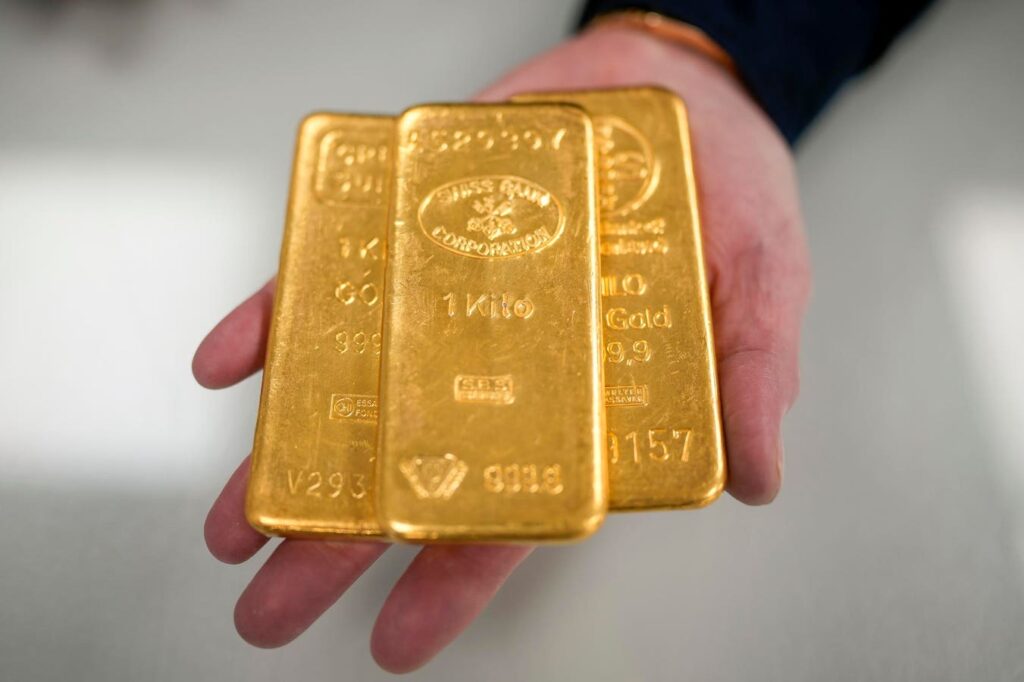In November, gold-backed exchange-traded funds (ETFs) experienced unprecedented outflows as investors in Europe liquidated their positions, a trend highlighted by the World Gold Council (WGC). The global funds faced a loss of 29 tonnes of gold, bringing total holdings down to 3,215 tonnes. The outflows, amounting to approximately $2.1 billion, marked the first significant decline since April of the same year. The reduction in assets was compounded by a four percent drop in gold prices, largely attributed to the strengthening of the US dollar following Donald Trump’s recent presidential election victory. This decline resulted in a 4% decrease in the total assets under management (AUMs), which reached $274.3 billion.
The WGC’s analysis indicates that the downturn in ETF holdings was primarily driven by heavy liquidations in Europe, which accounted for most of the outflows. Specifically, Europe saw a staggering outflow of 26 tonnes—valued at $1.9 billion—which reduced the region’s holdings to 1,288 tonnes and its AUMs to $109.8 billion. The council identified a range of factors affecting fund flows during this period, including weaker-than-expected macroeconomic data, concerns surrounding potential trade tariffs under the future Trump administration, uncertainty regarding central bank interest rate policies, and a shift in financial market behavior toward riskier assets.
In an unusual turn, Asian ETFs also faced outflows in November, ending a 20-month streak of consistent inflows. The region reported a loss of two tonnes of gold, translating to a negative flow valued at approximately $145 million. This decline brought total holdings to 208 tonnes and AUMs down to $18 billion. The WGC noted that the majority of outflows were dominated by China, where local gold prices plummeted, diminishing investor enthusiasm. Despite the ongoing volatility in the equity markets, many investors seemingly shifted their focus away from gold toward equities.
Conversely, Indian ETFs continued to demonstrate resilience, marking their eighth consecutive month of inflows. The WGC suggested that rising volatility in the equity market, coupled with an overall bullish sentiment toward gold, was the driving force behind this sustained demand. Indian investors appeared to favor gold as a safer asset amid broader economic uncertainties, highlighting a regional divergence in investment behavior concerning gold.
Despite the overarching trend of outflows in Europe and Asia, North American ETFs remained robust in November, reportedly recording inflows for the fifth straight month. Total holdings in North America increased by one tonne, raising the total to 1,655 tonnes. Moreover, inflows amounted to $79 million, resulting in an upward adjustment of AUMs to $141.1 billion. The WGC noted that despite a prevailing “risk-on” posture following the US election results, which pressured gold prices, the region still managed to attract capital, driven primarily by heightened demand in Canada.
Toward the end of the month, the United States demonstrated a rebound in inflows as markets adjusted their expectations in light of potential shifts toward a weaker dollar and lower yields following Scott Bessent’s nomination for Treasury Secretary. This uptick in demand was notable given the earlier part of November, which had seen outflows from the US market. Overall, while November showcased a complex landscape for gold ETFs—characterized by significant outflows in key regions, alongside resilient inflows elsewhere—it underscored the dynamic nature of gold investment as macroeconomic conditions continued to evolve.

